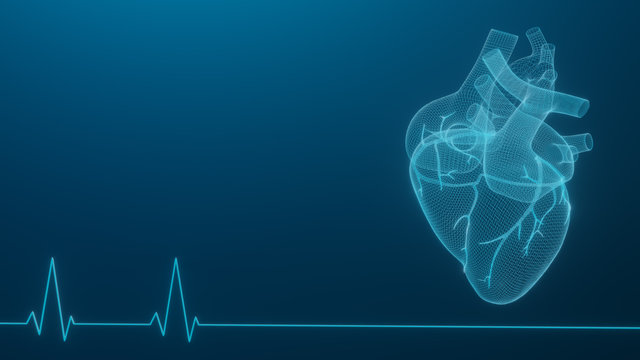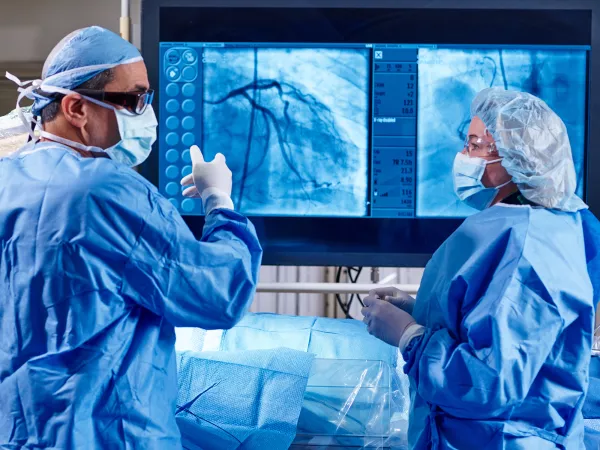Understanding hypertension with Cardiology: Symptoms, risks, and solutions
Understanding hypertension with Cardiology: Symptoms, risks, and solutions
Blog Article
Recognizing the Value of Cardiology in Modern Health Care Providers
Cardiology plays a vital duty in contemporary health care, particularly as cardiovascular disease continues to be the leading cause of mortality worldwide. Advances in diagnostics and therapy have actually transformed person treatment, allowing earlier treatments and improved outcomes. The shift towards preventative cardiology empowers people to manage their health proactively. As technology continues to progress, the assimilation of cutting-edge solutions may additionally redefine cardiology's effect on public health and wellness, triggering a better evaluation of arising patterns and their effects.
The Occurrence of Heart Condition and Its Influence on Public Wellness
Although heart problem stays the leading reason of death globally, its impact prolongs far past individual patients to influence public health and wellness systems and economic climates. The high occurrence of cardiovascular disease puts a substantial stress on healthcare resources, demanding boosted funding for therapy, avoidance, and rehab programs. Public health campaigns need to attend to danger factors such as excessive weight, smoking, and inactive way of lives, which contribute significantly to the climbing occurrence of heart conditions.Moreover, the financial worry associated with cardiovascular disease is immense, encompassing not only straight clinical expenses however additionally indirect expenses associated with shed productivity and premature death. Areas face obstacles in managing these expenses, often bring about variations in healthcare gain access to and end results. As the population ages and lifestyle-related threats remain to intensify, the seriousness for efficient cardiology interventions ends up being vital. Attending to heart illness is not just an issue of specific health and wellness however additionally a crucial public health priority.
Advances in Heart Diagnostics and Imaging Techniques
Current advancements in cardiac diagnostics and imaging techniques have revolutionized the field of cardiology, enhancing the capacity to monitor and detect heart diseases. Strategies such as cardiac MRI, CT angiography, and echocardiography have come to be significantly advanced, supplying in-depth images of heart frameworks and features. These techniques enable the very early recognition of problems like coronary artery illness, cardiac arrest, and valvular disorders.Moreover, developments in non-invasive diagnostics, such as wearable technology and remote surveillance tools, have actually equipped clients and health care carriers. These devices help with real-time monitoring of heart rhythms and other vital indications, leading to timely treatments. Furthermore, expert system is being integrated into imaging analysis, boosting precision and performance in medical diagnosis.
Innovations in Therapy Choices for Heart Issues
Recent innovations in cardiology have led to considerable innovations in treatment choices for heart conditions. These consist of advanced surgical techniques that improve step-by-step end results and arising medicines that offer new opportunities for treatment. As the area develops, these technologies play a crucial role in improving patient care and results.
Advanced Surgical Techniques
Developments in medical techniques have actually changed the landscape of cardiology, offering brand-new hope for patients with heart disease. Minimally intrusive treatments, such as catheter-based interventions, have actually significantly reduced recuperation times and medical facility keeps. Methods like robotic-assisted surgery improve accuracy, permitting specialists to navigate complicated physiological frameworks with greater precision. Developments in imaging technology facilitate real-time visualization throughout treatments, boosting end results. Transcatheter aortic shutoff substitute (TAVR) exhibits an innovation in treating aortic constriction, making it possible for shutoff replacement without open-heart surgical treatment. In addition, hybrid techniques that combine catheter-based and medical approaches give customized solutions for various cardiac concerns. These advanced surgical strategies not only enhance client security but additionally broaden therapy options, highlighting the essential role of development in modern cardiology practices.
Emerging Medications and Therapies
As the landscape of cardiology remains to progress, emerging medicines and therapies play a crucial function in improving therapy options for heart problems. Developments such as unique anticoagulants and progressed lipid-lowering representatives have transformed the management of cardio diseases, considerably lowering person morbidity and death. In addition, the development of genetics therapies and regenerative medication provides encouraging avenues for dealing with conditions previously deemed irreparable. Clinical trials are continually disclosing the effectiveness of these therapies, pushing the limits of traditional treatments. The integration of electronic health modern technologies facilitates personalized medicine, enabling for customized therapy plans based on hereditary and lifestyle factors. Jointly, these improvements underscore the dynamic nature of cardiology, enhancing patient end results and redefining criteria of treatment in modern healthcare.
The Duty of Preventive Cardiology in Patient Treatment
Precautionary cardiology plays a necessary function in patient care by concentrating on the recognition of threat factors that add to cardiovascular disease. With way of life adjustment techniques and early discovery techniques, doctor can efficiently minimize the incidence of cardiovascular occasions - Dr Garcia. This aggressive strategy not just improves individual outcomes yet likewise promotes long-lasting health
Threat Aspect Recognition
While cardio conditions stay a leading reason of morbidity and mortality worldwide, effective danger aspect recognition acts as a cornerstone of preventive cardiology. Recognizing risk aspects such as hypertension, hyperlipidemia, household, and diabetes mellitus background is essential for very early treatment. Healthcare experts make use of various screening techniques to evaluate these variables, enabling customized safety nets. Additionally, comprehending a patient's lifestyle selections, such as smoking cigarettes and physical inactivity, even more informs risk evaluations. This thorough examination enables medical professionals to create customized care strategies aimed at mitigating dangers. By prioritizing threat element recognition, health care systems can boost individual results and lower the total problem of heart diseases, inevitably contributing to enhanced public health approaches and resource allowance.
Way Of Life Adjustment Approaches
A plethora of researches highlights the crucial role of lifestyle modification approaches in reducing heart disease risk. These strategies incorporate dietary changes, enhanced physical activity, smoking cessation, and weight administration. By adopting a heart-healthy diet regimen abundant in fruits, vegetables, entire grains, and lean proteins, people can reduce cholesterol degrees and high blood pressure. Regular exercise strengthens the heart and enhances total cardiovascular health. Furthermore, giving up cigarette smoking substantially minimizes the risk of heart condition and improves recuperation prices for those with status quo. Weight management further adds to cardio wellness by reducing other threat elements such as diabetic issues and high blood pressure. Executing these lifestyle transforms not only promotes specific health yet likewise functions as a keystone of preventative cardiology in client treatment.
Very Early Discovery Methods
Lifestyle alterations substantially add to lowering heart disease threats, however they are most effective when coupled with early detection techniques. Preventive cardiology emphasizes the importance of determining prospective heart concerns prior to they intensify right into serious conditions. Techniques such as high blood pressure monitoring, cholesterol screening, and progressed imaging innovations like echocardiograms play critical functions in assessing cardiovascular health and wellness. Biomarkers and hereditary screening additionally improve the accuracy of very early discovery, permitting tailored preventative strategies. Normal heart risk examinations empower doctor to intervene proactively, potentially stopping cardiac arrest and strokes (Cardiology). By integrating these very early discovery techniques into routine care, clients can gain from timely way of life interventions and targeted treatments, inevitably improving and enhancing outcomes quality of life
Integrating Modern Technology Into Cardiology Practices
As improvements in technology remain to reshape different areas, the assimilation of ingenious devices and systems into cardiology techniques has become vital for improving client care and outcomes. Telemedicine systems allow cardiologists to check people from another location, boosting accessibility to care while lowering the problem on health care facilities. Wearable gadgets, such as smartwatches, allow continual heart rate monitoring, informing both patients and medical professionals to possible problems in real-time. Additionally, artificial intelligence (AI) is being used to analyze huge quantities of cardiac data, aiding in very early medical diagnosis and personalized treatment strategies. Advanced imaging methods, consisting of 3D echocardiography, boost visualization of heart pop over to this site structures, leading to a lot more specific interventions. Electronic health documents (EHRs) streamline patient details monitoring, making sure that cardiologists have instant accessibility to important information. Together, these technological advancements are changing cardiology, promoting positive management and improved health and wellness results for people with cardiovascular conditions.
The Value of Patient Education and Interaction
Patient education and learning and interaction play a crucial role in the monitoring of cardio health and wellness. By outfitting clients with expertise concerning their conditions, therapy choices, and way of life adjustments, healthcare carriers empower people to take an active function in their treatment. This positive method can bring about enhanced adherence to prescribed medicines, nutritional changes, and workout regimens, inevitably lowering the threat of complications.Engagement also promotes a strong patient-provider connection, urging open interaction and depend on. When individuals really feel notified and entailed, they are more probable to voice problems and ask inquiries, which can bring about much better professional end results. In addition, educational sources, such as workshops or electronic platforms, can improve understanding and promote self-management methods. Generally, focusing on patient education and engagement is important for boosting cardiovascular health, improving high quality of life, and minimizing medical care expenses related to heart diseases.
Future Patterns in Cardiology and Their Prospective Impact

Regularly Asked Concerns
What Way Of Living Adjustments Can Reduce Heart Illness Danger?
The existing question addresses lifestyle adjustments that can significantly lower heart disease threat. Cardiology Jupiter. Adopting a balanced diet, engaging in regular physical task, keeping a healthy and balanced weight, managing stress and anxiety, and staying clear of cigarette can significantly boost cardio health
How Can I Identify Early Indications of Heart Issues?
Identifying very early indications of heart troubles entails tracking signs and symptoms such as chest discomfort, lack of breath, tiredness, and uneven heartbeat. Prompt recognition of these signs can motivate needed clinical analysis and intervention for better outcomes.
What Are the Distinctions In Between Cardiologists and Cardiac Surgeons?
The distinctions between cardiologists and cardiac cosmetic surgeons hinge on their functions; cardiologists mostly detect and manage heart conditions through non-invasive approaches, while cardiac specialists perform operations to correct structural heart issues. Each plays a vital, unique role.

How Commonly Should I Get My Heart Wellness Checked?
The frequency of heart checkup varies based on individual risk elements. Usually, grownups must undergo assessments each to 2 years, while those with status quo might require even more constant evaluations as recommended by healthcare professionals.
What Role Does Genetics Play in Cardiovascular Disease Risk?
Genetics significantly influences cardiovascular disease threat, with familial patterns suggesting inherited conditions. Specific genetics can incline people to high blood pressure, cholesterol issues, and other cardio troubles, highlighting the importance of genetic screening in reviewing heart health. Heart disease stays the leading cause of fatality around the world, its influence prolongs much beyond private patients to influence public health systems and economic climates. Public health initiatives should attend to risk variables such as weight problems, smoking, and sedentary lifestyles, which add greatly to the rising occurrence of heart conditions.Moreover, the financial burden associated with heart disease is enormous, incorporating not just straight clinical expenses yet likewise indirect expenditures related to lost productivity and early mortality. Precautionary cardiology plays an essential role in person treatment by focusing on the identification of danger variables that add to heart condition. Artificial intelligence (AI) and device understanding are improving diagnostics and individual tracking, making it possible for very early detection find out here of heart conditions. The differences in between cardiologists and cardiac specialists lie in their roles; cardiologists primarily diagnose and take care of heart conditions via non-invasive methods, while heart specialists perform surgical procedures to fix architectural heart concerns.
Report this page